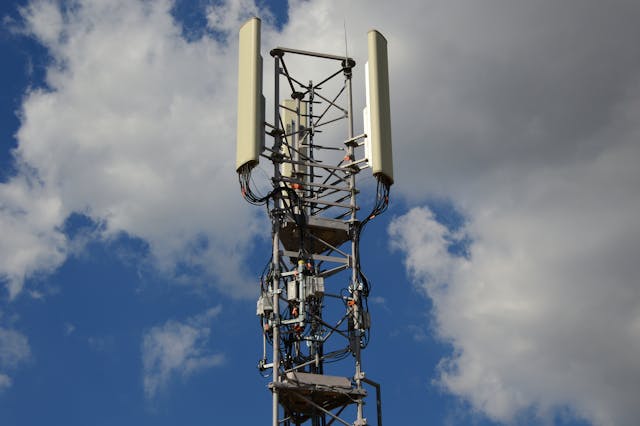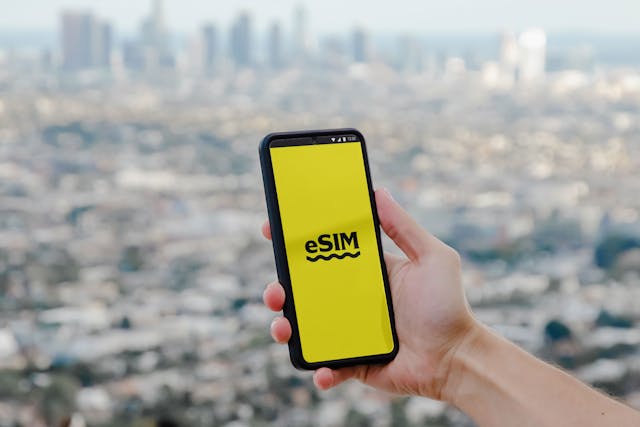5G Technology: How It Will Revolutionize Communication and Connectivity
The next generation of mobile connectivity is here: 5G technology. Promising faster speeds, lower latency, and more reliable connections, 5G is set to change how we communicate, work, and interact with the world around us. But what exactly is 5G, and how will it revolutionize our daily lives? Let’s dive into the transformative potential of this technology.

What is 5G?
5G stands for "fifth generation," and it is the latest standard in wireless network technology, following 4G. While 4G made high-speed mobile internet possible, 5G takes it to the next level by offering much faster data speeds, more stable connections, and the ability to connect many more devices simultaneously.
How It Works:
-
High Frequencies: 5G uses higher frequencies on the electromagnetic spectrum, allowing it to carry more data and provide faster speeds compared to 4G.
-
Network Infrastructure: 5G relies on a denser network of small cell towers to provide more reliable and widespread coverage, especially in urban areas.
Lightning-Fast Speeds
One of the most exciting promises of 5G is its incredibly fast data speeds. While 4G offers speeds of up to 1 Gbps (gigabit per second), 5G can theoretically provide speeds up to 100 Gbps—100 times faster than 4G!
How It Will Change Communication:
-
Instant Downloads: With 5G, you can download large files—like movies, games, or software updates—in seconds, rather than minutes. It could also enable ultra-high-definition (4K or even 8K) video streaming without buffering.
-
Seamless Video Calls: Real-time video calls will become more fluid, even in high-definition, with no lag or interruptions. This will revolutionize the way we connect with people across the globe, especially for work or long-distance relationships.
Ultra-Low Latency: Almost Instant Communication
Latency refers to the delay between sending and receiving data over a network. With 5G, latency is drastically reduced to as low as 1 millisecond—compared to the 30-50 milliseconds typical with 4G.
How It Will Impact Us:
-
Real-Time Communication: This ultra-low latency will make real-time communication almost instantaneous, opening up possibilities for remote work, telemedicine, and gaming.
-
Autonomous Vehicles: 5G will enable faster communication between vehicles and infrastructure, reducing delays in decision-making. This is essential for the development of self-driving cars, which rely on near-instant communication to navigate safely.
Connecting More Devices Simultaneously
The “Internet of Things” (IoT)—the idea that everyday devices can be connected to the internet—has been growing steadily. However, 4G networks were not designed to handle the vast number of devices that we use daily. 5G will change that, with the ability to support up to 1 million devices per square kilometer.
How It Will Change Our Homes and Cities:
-
Smart Homes: 5G will make smart home devices like thermostats, security cameras, and refrigerators more efficient. With faster speeds and better connectivity, all devices in your home will work seamlessly together.
-
Smart Cities: 5G will power the next generation of smart cities, where everything from traffic lights to public transportation is connected and optimized in real-time, making cities more efficient and livable.
Empowering Businesses and Industries
Businesses and industries across the globe stand to benefit from the capabilities of 5G. Its fast speeds, low latency, and ability to connect more devices will help drive innovation in fields like manufacturing, healthcare, and entertainment.
How It Will Impact Various Sectors:
-
Healthcare: Doctors can perform remote surgeries using robotic tools with near-instant feedback, and medical professionals can access patient data in real-time, improving diagnoses and treatment.
-
Manufacturing and Industry: 5G will enable the widespread use of connected devices in factories, leading to smarter manufacturing processes, predictive maintenance, and enhanced worker safety through real-time monitoring.
-
Entertainment and Media: With 5G, augmented reality (AR) and virtual reality (VR) experiences will be more immersive, and live-streamed events like concerts or sports will be delivered in ultra-high definition with minimal lag.
Enhancing Mobile Gaming and Virtual Reality
Mobile gaming and VR experiences have been on the rise, but 4G networks couldn’t always deliver the smooth, uninterrupted experience that gamers crave. 5G will change that, offering lightning-fast speeds and low latency, perfect for high-quality gaming and immersive VR experiences.
How It Will Transform Entertainment:
-
Cloud Gaming: Services like Google Stadia and Xbox Cloud Gaming will benefit from 5G’s fast speeds, allowing users to play graphically intensive games on their mobile devices without needing powerful hardware.
-
Enhanced VR and AR: Virtual and augmented reality will become more seamless and interactive, opening up new possibilities for education, training, entertainment, and even tourism.
Bridging the Digital Divide
One of the most important aspects of 5G technology is its potential to bridge the digital divide, particularly in rural or underserved areas. With faster, more reliable wireless connections, 5G can provide internet access to places where traditional broadband infrastructure is difficult or expensive to deploy.
How It Will Improve Connectivity:
-
Remote Areas: Rural communities will have greater access to high-speed internet, empowering students, businesses, and individuals to take advantage of the digital economy.
-
Affordable Access: 5G networks can provide more affordable internet options, ensuring that more people can stay connected without costly cable subscriptions or infrastructure limitations.

A Transformative Future
5G is not just a faster version of 4G—it’s a transformative leap forward in how we communicate, work, and live. From enhancing mobile gaming and entertainment to enabling the growth of smart cities and connected industries, 5G is set to reshape the way we experience the world.
What’s Next:
-
Continuous Innovation: As 5G networks roll out globally, we can expect even more innovations in autonomous vehicles, healthcare, smart homes, and many other sectors.
-
Adoption Timeline: While many urban areas are already starting to adopt 5G, it will take time for the technology to be fully implemented worldwide, and more devices will need to be 5G-compatible.
Conclusion: A Game-Changer for Communication
The arrival of 5G technology marks the beginning of a new era in connectivity. With faster speeds, lower latency, and the ability to connect more devices, 5G has the potential to revolutionize almost every aspect of our lives—from how we communicate to how we work, learn, and entertain ourselves. As 5G continues to unfold, the world is about to experience a major shift in digital experiences, ushering in an exciting future of connectivity and innovation.












